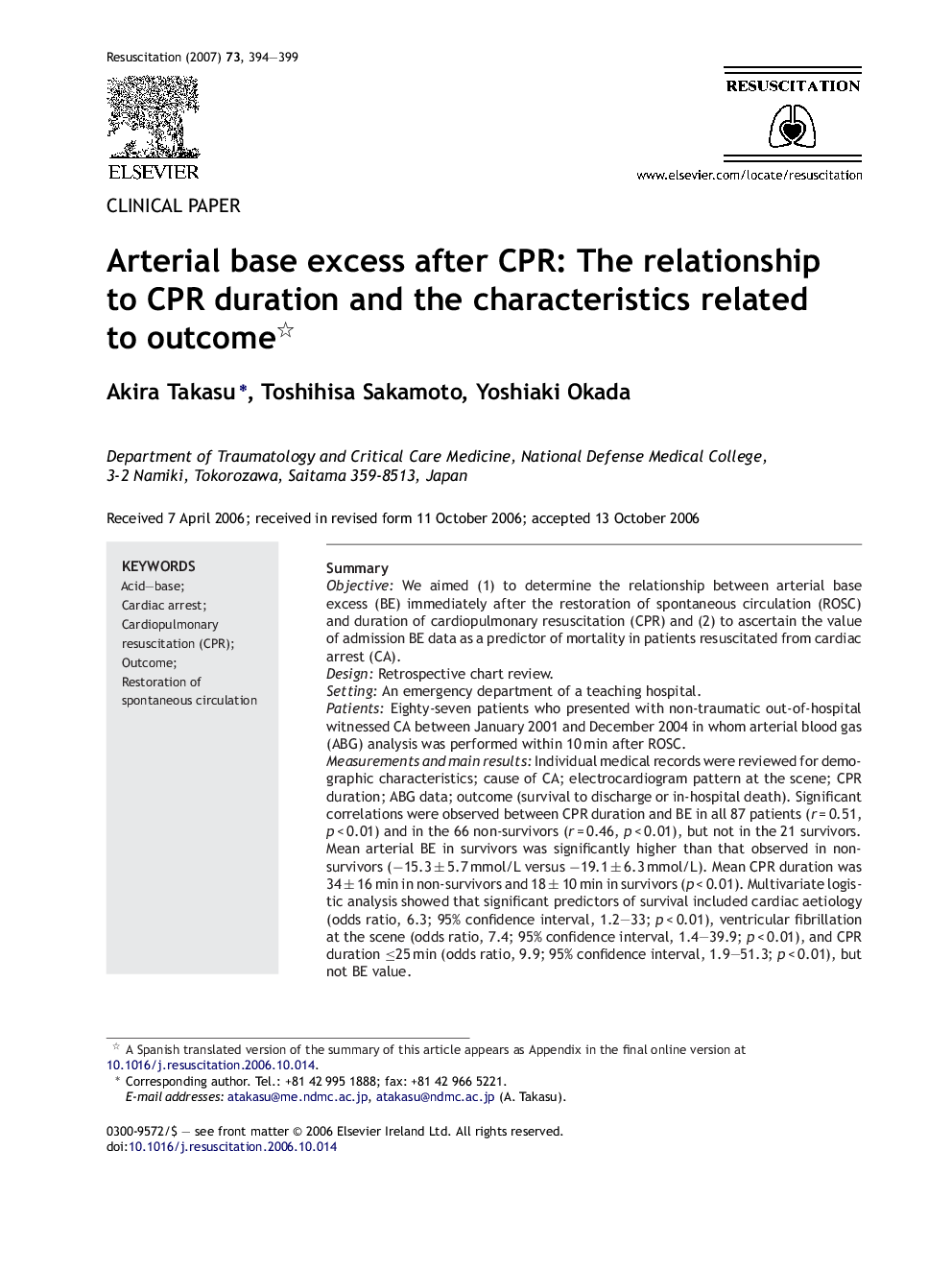| کد مقاله | کد نشریه | سال انتشار | مقاله انگلیسی | نسخه تمام متن |
|---|---|---|---|---|
| 3010918 | 1181537 | 2007 | 6 صفحه PDF | دانلود رایگان |

SummaryObjectiveWe aimed (1) to determine the relationship between arterial base excess (BE) immediately after the restoration of spontaneous circulation (ROSC) and duration of cardiopulmonary resuscitation (CPR) and (2) to ascertain the value of admission BE data as a predictor of mortality in patients resuscitated from cardiac arrest (CA).DesignRetrospective chart review.SettingAn emergency department of a teaching hospital.PatientsEighty-seven patients who presented with non-traumatic out-of-hospital witnessed CA between January 2001 and December 2004 in whom arterial blood gas (ABG) analysis was performed within 10 min after ROSC.Measurements and main resultsIndividual medical records were reviewed for demographic characteristics; cause of CA; electrocardiogram pattern at the scene; CPR duration; ABG data; outcome (survival to discharge or in-hospital death). Significant correlations were observed between CPR duration and BE in all 87 patients (r = 0.51, p < 0.01) and in the 66 non-survivors (r = 0.46, p < 0.01), but not in the 21 survivors. Mean arterial BE in survivors was significantly higher than that observed in non-survivors (−15.3 ± 5.7 mmol/L versus −19.1 ± 6.3 mmol/L). Mean CPR duration was 34 ± 16 min in non-survivors and 18 ± 10 min in survivors (p < 0.01). Multivariate logistic analysis showed that significant predictors of survival included cardiac aetiology (odds ratio, 6.3; 95% confidence interval, 1.2–33; p < 0.01), ventricular fibrillation at the scene (odds ratio, 7.4; 95% confidence interval, 1.4–39.9; p < 0.01), and CPR duration ≤25 min (odds ratio, 9.9; 95% confidence interval, 1.9–51.3; p < 0.01), but not BE value.Conclusions(1) BE immediately after ROSC was well correlated with CPR duration. (2) BE could thus distinguish survivors from non-survivors; however, it was not found to be an independent predictor for mortality in resuscitated CA patients.
Journal: Resuscitation - Volume 73, Issue 3, June 2007, Pages 394–399